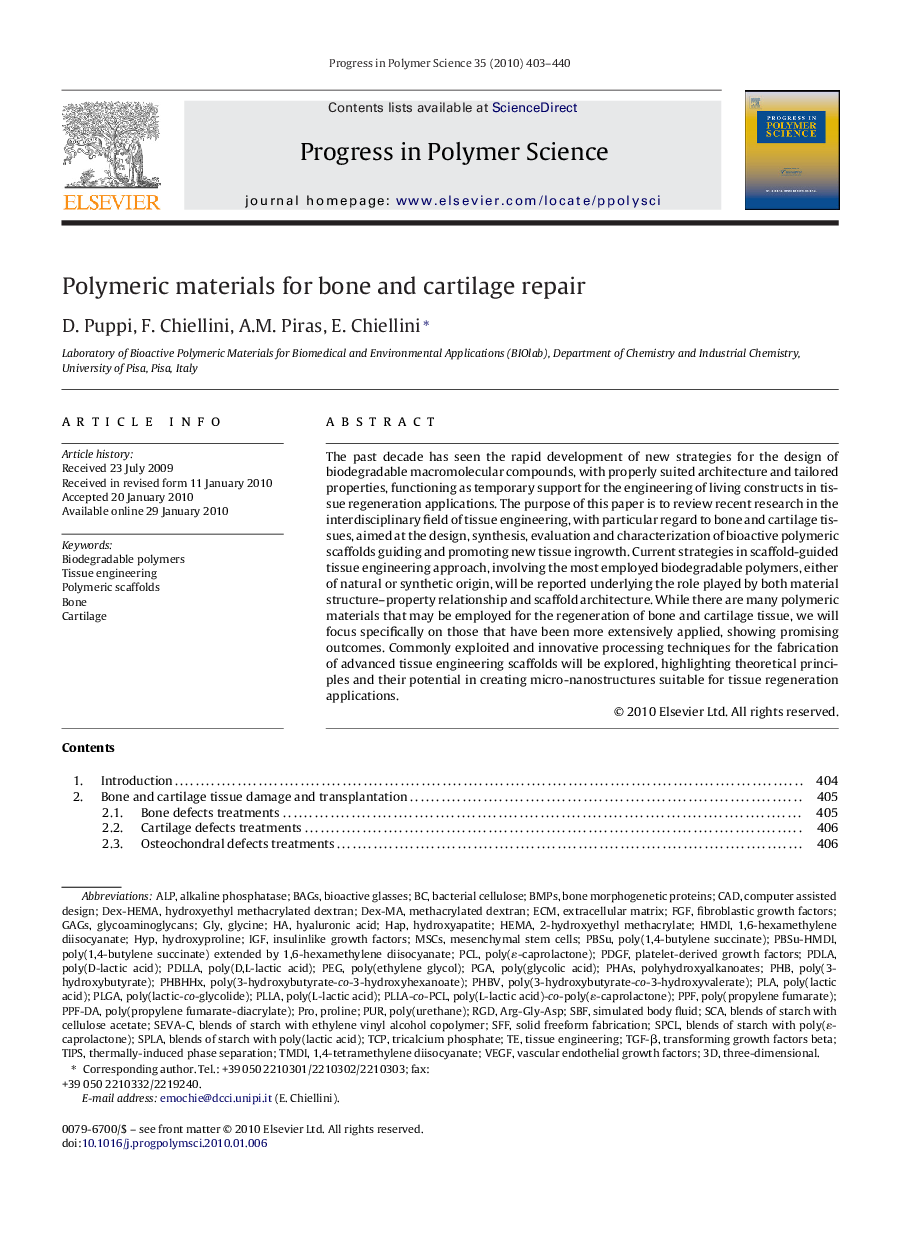| Article ID | Journal | Published Year | Pages | File Type |
|---|---|---|---|---|
| 5208713 | Progress in Polymer Science | 2010 | 38 Pages |
Abstract
The past decade has seen the rapid development of new strategies for the design of biodegradable macromolecular compounds, with properly suited architecture and tailored properties, functioning as temporary support for the engineering of living constructs in tissue regeneration applications. The purpose of this paper is to review recent research in the interdisciplinary field of tissue engineering, with particular regard to bone and cartilage tissues, aimed at the design, synthesis, evaluation and characterization of bioactive polymeric scaffolds guiding and promoting new tissue ingrowth. Current strategies in scaffold-guided tissue engineering approach, involving the most employed biodegradable polymers, either of natural or synthetic origin, will be reported underlying the role played by both material structure-property relationship and scaffold architecture. While there are many polymeric materials that may be employed for the regeneration of bone and cartilage tissue, we will focus specifically on those that have been more extensively applied, showing promising outcomes. Commonly exploited and innovative processing techniques for the fabrication of advanced tissue engineering scaffolds will be explored, highlighting theoretical principles and their potential in creating micro-nanostructures suitable for tissue regeneration applications.
Keywords
PDLAPHBPHBHHxPLARGDTricalcium phosphateSBFFGFSCAPHBVpoly(D-lactic acid)MSCsPHAsArg-Gly-AspPDGFHYPPLLAGAGs2-hydroxyethyl methacrylate1,6-Hexamethylene diisocyanatePDLLAPCLPolyhydroxyalkanoatesIGFPGATGF-βMethacrylated dextranPLGAsPLAThree-dimensionalTMDIECMHMDIPPFSFFSPCLBMPsALPAlkaline phosphataseBoneHyaluronic acidThermally-induced phase separationPolymeric scaffoldspurSolid freeform fabricationMesenchymal stem cellsBacterial celluloseCADvascular endothelial growth factorsBioactive glassesCartilageVascular Endothelial Growth Factor (VEGF)platelet-derived growth factorsTCPExtracellular matrixSimulated body fluidTissue engineeringPROTIPSHEMAHydroxyapatitehydroxyprolinebone morphogenetic proteinsProlinePoly(3-hydroxybutyrate)Poly(3-hydroxybutyrate-co-3-hydroxyhexanoate)Poly(3-hydroxybutyrate-co-3-hydroxyvalerate)poly(d,l-lactic acid)Poly(L-lactic acid)Poly(ɛ-caprolactone)poly(glycolic acid)Poly(lactic acid)Poly(propylene fumarate)Poly(ethylene glycol)Poly(urethane)Biodegradable polymersPEGBagsHApGlyGlycine
Related Topics
Physical Sciences and Engineering
Chemistry
Organic Chemistry
Authors
D. Puppi, F. Chiellini, A.M. Piras, E. Chiellini,
